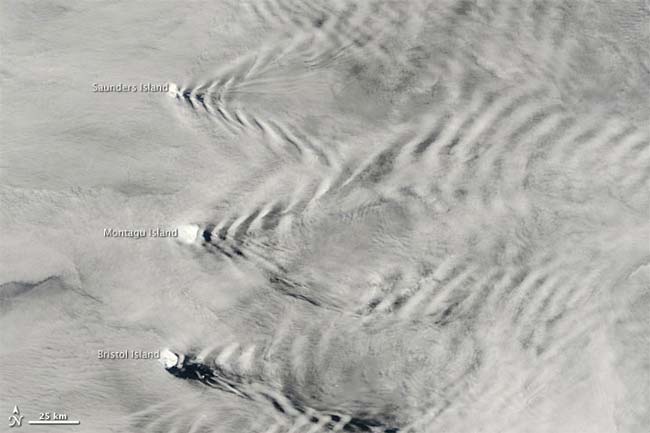Islands Make Waves ... In the Sky

Islands don't move much, but they can still make waves. In fact they sometimes make dramatic waves … in the clouds.
In a new satellite image, the South Sandwich island chain triggers a series of airborne waves. The V-shaped waves fan out to the east, visible as white clouds over the dark ocean water.
The islands disturb the smooth flow of air, creating waves that ripple through the atmosphere downwind of the obstacles, NASA explained in a statement.
The moist, cloudy air over the ocean (meteorologists call this the marine layer) is often capped by a layer of dry air. When the wave ripples through the atmosphere downwind of the islands, clouds form (or persist) at the crests of the waves because air cools as it rises, and water vapor condenses into cloud droplets.
In the wave troughs, some of the dry air from above sinks into marine layer, replacing the cloudy air. In addition, as air sinks, it warms, causing clouds to evaporate.
The rugged islands, in the southern Atlantic Ocean, are of volcanic origin — Bristol and Montagu have been active during recorded history.
Get the world’s most fascinating discoveries delivered straight to your inbox.



